
“I’m going to fail this test, then I’m going to fail my end-of-year exams. Then I’m going to get into a bad secondary school, I’m going to do badly, and I’ll have nowhere to go afterwards. All because I can’t study. I’m such a failure.”
These thoughts paralysed me whenever I realised that I didn’t catch the concept the teacher just taught the class or when I couldn’t do something that my classmates seemingly had no problems doing.
Math and science classes were the worst for my self-esteem.
If this situation sounds familiar to you, don’t despair!
Firstly, please don’t tie all of your self-worth and confidence to your performance in school.
Secondly, you’re not bad at studying; you’ve just not found a method of studying that works best for you!
Let me tell you a story.
One day during science class, I did what everyone told us not to do.
I doodled the plant transport system in my notebook, admired my artwork, and closed the book.
But imagine my surprise when I was breezing through the questions on that topical quiz!
A switch just flipped in me, and I realised that I’m a visual learner.
So from that day on, I was pretty much golden at science… and anything else that can be doodled out onto my notebook!
The Different Learning Styles

I’m lucky to have found a style of learning that works well for me.
Many Singaporeans still blindly follow the method of just reading, writing, and note-taking without stopping to think if it’s even the best method for them.
But hey, if that works well for you, don’t stop!
However, many students follow this method because it’s the only method they’ve ever known from our rigid education system.
Did you know that there are three other main styles of learning under the VARK model? VARK stands for Visual, Auditory, Reading/Writing, and Kinaesthetic.
Most people are actually a mix of learning styles but have a dominant style that works the best for them.
But we’ll get into all of that soon!
So if you’re in for a change, read on to find out which style of learning would suit you best and how you should study for the best grades you’ve ever received!
Visual

Do you have to lay your rainbow-coloured highlighters and post-it notes out before you begin your studies?
If you’re like me, you always draw mindmaps, and you can remember drawings of how osmosis works but not the written sentence in your own textbook, then you’re a visual learner.
This means you learn best by being able to visualise the concept!
Auditory
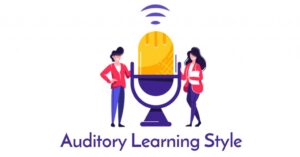
Or perhaps all you have to do is simply pay attention in class, and you like to ask and answer questions in class.
What’s more, you find that you study better with music. If that’s the case, then lucky you! You’re a visual learner.
Reading/Writing

Perhaps the most obvious one and the style that every student is the most familiar with, is good ol’ reading and pen-and-paper writing.
Writing notes down, rephrasing your textbook into words that you understand better, and explaining concepts over and over again to yourself helps you understand your concepts.
As I mentioned above, this method is the one most students use, with good reason.
Writing something down is the most effective way to understand and remember a concept.
Kinaesthetic
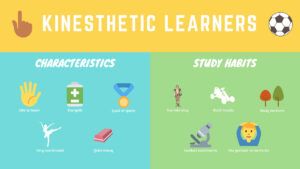
‘Kinaesthetic’ refers to the movement of your body.
So kinaesthetic learners get their brains moving by literally moving their bodies too.
If you learn better while tapping your pencil or feet while sitting, walking while reading, or attempting the experiment you saw in your science textbook, you’re a kinaesthetic learner!
How They Affect Your Learning

Each style of learning has its strengths and weaknesses.
For example, visual learners tend to have great memory and visualisation skills. However, we may get distracted easily by the environment around us.
So knowing your learning style would help you know how to study best.
It would be like learning which environment every animal survives the best in, so you can place the animal in that specific environment to help them succeed.
But, of course, not all learners of one style should be lumped together! We’re all unique individuals after all!
You could be a visual learner who could study anywhere because you have laser-sharp focus, or an auditory learner who finds that fidgeting helps a lot in staying focused.
How Then Should You Be Learning?

There isn’t a single best way for anyone to study.
Most of us use at least one or two learning styles in our method.
But it makes sense for someone who’s more of an auditory learner to focus on the teacher’s lecture more rather than doodling the concept in their notebook, right? And if you respond well to kinaesthetic learning, don’t just sit at your desk!
After you find your learning style and know about your strengths and weaknesses, you’ll be able to know what works best for you.
Study Tips for Visual Learners
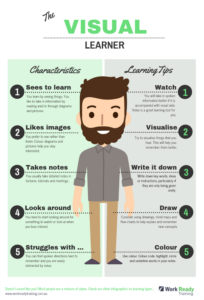
(Credits: Work Ready)
Do not be afraid to vandalise textbooks (as long as it’s yours) and draw out your understanding of the concept you’re learning.
Making links within the concept will help you understand it on a deeper level too. This should be easier, and it can be made easier by writing or drawing it out on paper.
Putting it on paper can help you to find “small cracks” in the foundation of your understanding too, so you can “zoom in” and understand the concept on a deeper scale!
Since you’re translating a concept from one medium (written or spoken words) to another, it can be hard, depending on the complexity of the concept. So give yourself time and don’t rush it.
Auditory Learners
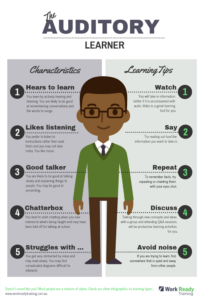
(Credits: Work Ready)
This one is pretty straightforward; just pay attention to what’s being said. For a level up, recording lectures, classes, or even of yourself reading the notes and playing them back will be of great help too!
Read & / Write Learners
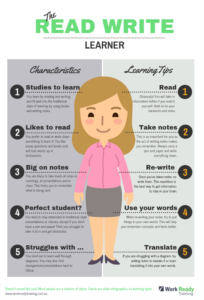
(Credits: Work Ready)
Another straightforward one.
Read and write A LOT. Dive into books and write essays on topics you’d like to learn more about. Take detailed notes when you’re revising, and use flashcards to help you digest and understand the information better!
Kinaesthetic Learners

MOVE! Get up and do something. Walk around your room while memorising your notes or create a diorama of the bombing of Pearl Harbour. Anything that gets you to move around will definitely help.
The Four Other Lesser Known Styles of Learning

These are the four main styles of learning that the VARK model covers.
However, there are still four more lesser-known styles of learning! So if you’re always feeling out of place, you might finally find your place now!
Logical Learners

This is another style of learning that visual and reading/writing learners might find that they include in their mix too.
Logical learners like to find links, patterns, causes, and effects, which is how they form an intricate “web of concepts.”.
Social Learners

(Credits: Envanto Elements)
Have you ever felt like you understood the lesson and concept better after you explained it to a friend?
Spitting information out forces you to dig deep for the information and recall what you’ve learned. It’ll also help you identify any gaps in your foundation that you can fix.
Solitary Learners

Solitary learners are the “alpha wolves,” who prefer to study alone. Maybe you find it too distracting to study around others.
Nature Learners

Now for a more niche one, there are some people who find it more conducive and productive to study in nature!
Perhaps it’s the sounds of the birds tweeting, the sunlight on their faces, and the fresh air that allow them to focus more.
How fairy-like!
Conclusion
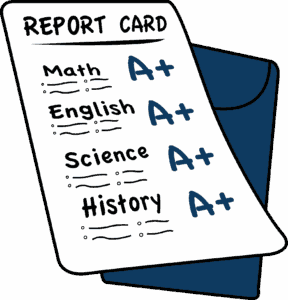
Studying is no easy feat.
So knowing what your learning style is can greatly benefit you, as it shows you the most optimal way to approach the daunting task.
Studying can be fun and a breeze if you know how to approach it properly. So keep these tips and knowledge in mind the next time you sit down for your next mind-numbing session, and you might find an increase in productivity!
However, if you still need a little help understanding your concepts, SmileTutor has a great tutor for you to choose from, no matter your learning style!
